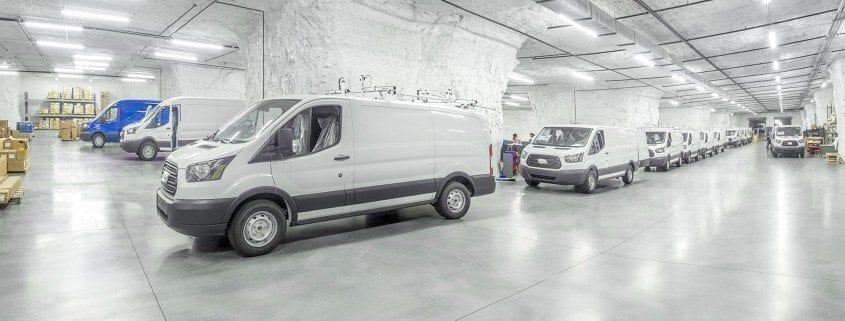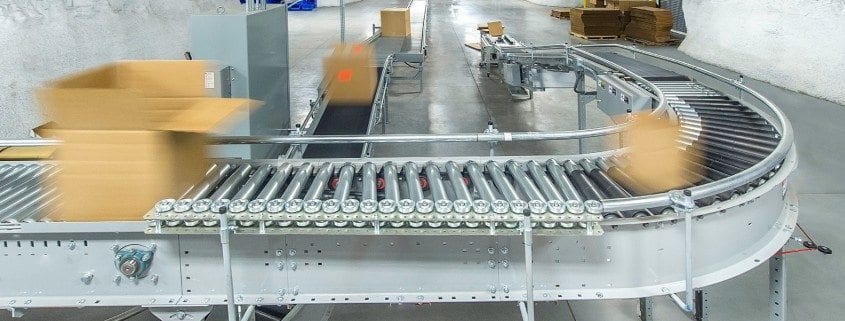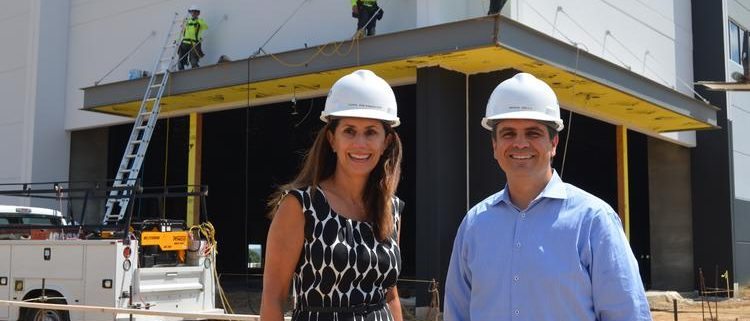Tag Archive for: automotive alley
Another firm wheels into Hunt Midwest’s Automotive Alley
Rob Roberts – Kansas City Business Journal
Hunt Midwest has landed its 14th auto industry-related tenant at Automotive Alley, a combination of above- and below-ground real estate near the junction of Missouri Highway 210 and Interstate 435 in Kansas City.
Dejana Truck & Utility Equipment, a New York-based subsidiary of Douglas Dynamics Inc. (NYSE: PLOW), has leased 90,000 square feet in SubTropolis for a new Ford Transit and Ford F-150 upfitting operation. The firm also will lease an additional 2 acres for vehicle staging, Hunt Midwest reported.
Hunt Midwest’s Automotive Alley includes space in SubTropolis, the world’s largest subterranean business complex, and the roughly 700-acre Hunt Midwest Business Center surface development above it.
“Dejana is the 14th auto company to choose Automotive Alley for upfitting, distribution or coordination operations in the past six years,” Mike Bell, Hunt Midwest vice president of commercial development, said in a release. “This cluster effect of automotive companies located within SubTropolis and the Hunt Midwest Business Center allows companies like Dejana to be more productive and cost competitive, which is the essence of Automotive Alley.”
Dejana manufactures van partitions, racking systems and hauling systems for after-market installation on commercial vans and trucks. The company chose SubTropolis because of its location just south of Ford’s Kansas City Assembly Plant in Claycomo and the availability of space for staging vehicles before delivery, Andrew Dejana, president of Dejana Truck & Utility Equipment, said in a release.
“Being able to quickly move vehicles from Ford’s plant to our upfitting operation, combined with the ability to stage those vehicles nearby, is an unbeatable value proposition in our business,” Dejana said in the release. “SubTropolis was the logical choice for Dejana as we work to expand our reach and improve our ability to serve customers in the energy, utility and telecommunications industries. We look forward to continuing the great partnership we have with Ford, and a presence in the Kansas City market will strengthen our position with the fleet and ship-through business.”
Additional upfitters and suppliers with locations in Automotive Alley include AER Manufacturing, Adrian Steel, Auto Truck Group, Clore Automotive, Ground Effects, Grupo Antolin, Knapheide Manufacturing Co., Masterack LLC, CVP Group LLC, Midway Ford, Reading Truck Body LLC, Spartan Motors and XPO Logistics. Those companies, combined with Ford’s North American Vehicle Logistics Outbound Shipping facility, have more than 10,000 spaces for vehicle staging in Automotive Alley.
Industrial Boom Sweeps Across KC
E-commerce, auto companies drive wave of spec projects.
Christina Cannon and Matt Valley – Heartland Real Estate Business
When it comes to the Kansas City industrial market, some developers have a build-it-and-they-willcome mentality.
Kansas City’s central location is attracting a number of e-commerce companies and strengthening the heavy automotive industry presence that has been a part of the city’s fabric for some time. To deal with demand and keep Kansas City on the radar, developers are ramping up construction on speculative projects.
“Tenants often don’t have time to come to town and build,” says Daniel Jensen, principal at Kessinger Hunter. “So if they come to a market like Kansas City that doesn’t have a certain kind of product available, they just keep going to the next market.”
For many tenants, however, that shouldn’t be an issue thanks to the amount of industrial space set to come on line in the near future. According to Costar, there was 5.3 million square feet of overall industrial space under construction at the end of the second quarter this year. This is on top of 2.8 million square feet of space that has already been delivered in the first half of the year.
“In the last three to four years there has been about 4.5 to 5 million square feet of new product brought on line each year and the majority of it has been getting absorbed,” says Jensen. “Everyone has gotten a whiff of fresh cookies in the air and has decided that they ought to be baking their own fresh cookies.”
Jensen notes that Kansas City is a fastpaced market, and when tenants want to set up shop, they want to do so quickly.
“People don’t want to come to the town and say, ‘we need to be up and operational in 18 months,’” says Jensen. “They want to come to town and say, ‘I need to order racks in 60 days, and I need to be operable in six months.’ That lends itself to a larger amount of spec space versus built-to-suit opportunities.”
Logistics Park continues streak
Leading the pack in speculative construction are NorthPoint Development and BNSF Railway with their 1,700-acre intermodal Logistics Park Kansas City. The 548,333-square-foot Inland Port XV came on line during the second quarter, and the duo has two more buildings totaling 1.5 million square feet to be delivered by the end of the third quarter.
“Logistics Park Kansas City is by and far the largest producer of spec space in the market and has been for the last several years, and that has everyone’s attention,” says Jensen. “They’ve been successful thus far getting deals done and absorbed, but are they going to be able to continue that pace? We just don’t know. Time will tell.”
Experts attribute some of the industrial park’s success to a shift in how companies are shipping goods.
“It used to be if a company was going to have three distribution centers they would have one on the West Coast, one on the East Coast and one in the Midwest. If they put one in the Midwest they generally went to Chicago or Dallas, somewhere with a larger population base,” says Jensen. “Now, we’re seeing the significance of Kansas City. You can get to about 90 percent of the population of the continental United States within two days by truck.”
Logistics Park Kansas City is the largest intermodal facility in the United States in terms of tonnage that passes through via rail, and it is the third largest trucking facility in the country.
Distribution hubs are becoming more important to e-commerce than population hubs, according to Mike Bell, vice president and general manager of commercial real estate for Hunt Midwest.
“I think initially when e-commerce was taking off you were seeing a lot of the distribution centers focused on the population density centers,” says Bell. “Now people are saying, ‘we’re going to locate in an area where we can touch the most amount of the country.’”
Shipping hubs in demand
Proximity to the major hubs of shipping companies is also an important factor for many industrial tenants in the area, says Bell. For this reason, the southwest corner and the northeast corner of Kansas City are seeing the brunt of construction and lease activity.
“Part of what we see is that tenants are locating in centers where they’re near FedEx and UPS,” says Bell. “In the northeast part of Kansas City we are near both FedEx and UPS, and are within 20 minutes of the airport. If somebody needs next-day shipping, we’re the last stop. These e-commerce companies can take an order from somebody at 7 or 8 p.m. and still get it shipped out the next morning.”
According to CoStar, of the 5.3 million square feet of industrial space under construction at the end of the second quarter, 4 million of that is in South Johnson County. The North of the River submarket welcomed over 900,000 square feet of the of 2.8 million square feet that was delivered to the Kansas City industrial market by mid-year.
Ford Transit provides a boost
E-commerce companies aren’t the only ones fighting for space in the industrial landscape. Similar to how Internet giants want to be near shipping companies, automotive suppliers and upfitters want to be near Ford Motor Co. and General Motors.
Roughly five years ago, Ford made the decision to transition its Econoline van model to the Transit van model, and locate that manufacturing operation in Kansas City. The new Transit vans can be upfitted to serve as contractor vehicles, shuttle buses or even ambulances, and every one is manufactured in Kansas City.
“When Ford made that choice it was a very monumental decision in Kansas City because the state of Missouri has since passed legislation to give automotive companies and other advanced manufacturing companies significant incentives,” says Bell. “That has propelled a lot of companies to come to Kansas City.”
Companies relocating facilities in Kansas City to become part of the automotive fabric include many manufacturers, suppliers and upfitters.
“Every time Ford or GM retools, it creates a feeding frenzy,” says Jensen. “Tenants that need facilities come racing to town just to be close to GM and Ford.”
One space that these support companies love to flock to is SubTropolis, the world’s largest underground business park. Hunt Midwest developed the park, which contains 6 million square feet of leased space and the ability to expand by another 8 million square feet. A surface business park providing even more options complements SubTropolis.
“We offer a unique perspective,” says Bell. “We are developing 2,500 acres of land on the surface and then below it we are developing virtually the same footprint.”
In addition to Ford, tenants catering to automotive industry that lease space in SubTropolis include Knapheide Manufacturing Co., Adrian Steel, Ground Effects and Leggett & Platt Commercial Vehicle Products, among others. So many upfitters are occupying space in the industrial cave that SubTropolis has even coined the moniker “Automotive Alley.”
“The temperature is constant, the humidity is constant,” says Bell. “For Ford to manufacture the Transit or the Ford F150, SubTropolis allows them to maintain a high level of quality and standards.”
SubTropolis does data
With tenants occupying anywhere from 10,000 square feet to 500,000 square feet, SubTropolis doesn’t just accommodate automotive companies. A data center opened in 2014 is bringing the industrial market full circle by attracting e-commerce users.
“We found having a data center relates closely to our e-commerce customers, because our e-commerce tenants need higher speed Internet connectivity,” says Bell. “With our data center and the fiber carriers that we have, we are able to connect our tenants with that.”
Bell notes that for e-commerce companies to survive they need both the logistics of being near shipping companies like FedEx and UPS and also bandwidth and connectivity, both amenities SubTropolis can provide.
“I see the data center as the cash register of e-commerce,” says Bell. “Somewhere there is a data center that’s running all the servers to allow e-commerce to flourish.” But not only can having a data center in the same area save on delivery speeds, it also adds a layer of security.
“That’s a big advantage,” continues Bell. “From a security standpoint, we are able to control all of our entrances, and because of our government tenants, we are required to have a high level of security.”
LightEdge Solutions, a cloud service provider, colocation and consulting company, was the first tenant at the 400,000-square-foot SubTropolis Technology Center and employees 200 people in the underground, hightech labyrinth.
What’s next?
Professionals immersed in the Kansas City industrial market agree about one thing — the market is booming. But for how long?
“Driving around SubTropolis and our Hunt Midwest Business Center, I’m seeing all of these ‘help wanted’ and ‘now hiring’ signs,” says Bell. “That to me sends the sign that the tenants are productive, their businesses are growing and they have a need.”
Jensen believes that all of this activity may be a new baseline, though the industry should prepare for the regular ups and downs within this framework.
“There most definitely is a cycle and even the new norm is going to have its downturn and its upturn. Larger users are finding Kansas City attractive and want to be here for various reasons, but without a doubt the feeding frenzy will slow at some point, and people will call an end to that cycle.” says Jensen.
“We’re playing musical chairs, and the music is going to stop and there’s going to be a few folks without seats. But having said that, I think the industrial market — the user market — is healthy.”
Auto, e-commerce demand fuel Hunt Midwest Business Center expansion
Rob Roberts – Kansas City Business Journal
By the time Hunt Midwest completes HMBC Logistics I next month, the new 200,000-square-foot Class A industrial building in the Hunt Midwest Business Center may well be leased up, said Ora Reynolds, the Kansas City-based development firm’s CEO.
Hunt Midwest is currently in the final stages of negotiations with three tenants that would fill the building, which was started last year on a speculative basis, meaning before any tenants were signed.
Once that happens, Reynolds said, Hunt Midwest will start on one of the other two 200,000-square-foot specs planned for adjacent sites in the surface business park located near Parvin Road and Interstate 435 in Clay County — just a mile and a half away from the Ford Kansas City Assembly Plant and right above the world’s largest underground business park, Hunt Midwest’s SubTropolis.
According to Reynolds, the trio of 200,000-square-feet buildings is designed to fill a niche in the market for tenants needing 40,000 to 50,000 square feet of Class A industrial space with features such as 32-foot clear height, multiple dock doors (HMBC Logistics I’s current 20 doors can be tripled to meet tenant demand) and 60-foot deep bays that allow indoor staging for 53-foot trailers. Read more…
Ford is keeping the line moving in Kansas City.
Ryan Tompkins – Manager of Sales & Leasing
When people think about Kansas City, chances are they think about barbecue, jazz, the Kansas City Chiefs and of course, our World Series-winning Royals.
What they may not realize is that along Kansas City’s I-35 Northland corridor, Ford has managed to cover all the bases by putting a winning team together to support production and customization of its two Kansas City-made vehicles, the top-selling Ford F-150 and the Ford Transit, the top-selling commercial van.
It all begins at Ford’s massive Claycomo Assembly Plant and it ends just a few miles south at Hunt Midwest’s Automotive Alley, a sprawling above- and below-ground commercial business park that is home to Ford’s 29-acre North American Vehicle Logistics Outbound Shipping facility, or NAVLOS.
After Ford F-150s and Transit commercial vans roll off the assembly line at Claycomo, they’re transported a couple of miles to the NAVLOS facility in Automotive Alley for staging. The vehicles are then transferred to one of 10 Ford approved upfitters located within Automotive Alley, which includes both the Hunt Midwest Business Center (HMBC) and SubTropolis, the world’s largest underground business complex.
Since 2012, Automotive Alley has seen tremendous growth in its fleet of upfitters, with companies like Adrian Steel, CASECO, Ground Effects, Knapheide, Sortimo and Leggett & Platt adding customizable cargo management solutions. Other auto industry related companies within Automotive Alley include distributors AER Manufacturing, Clore Automotive, Grupo Antolin and Midway Ford, as well as 3PL provider XPO Logistics. And more upfitters, suppliers and related companies are looking at Automotive Alley every day.
With the Kansas City Claycomo plant helping lead the way for Ford’s best year ever, Hunt Midwest is developing speculative industrial space, both below (SubTropolis) and above (HMBC) ground, to accommodate future growth companies looking for a centrally located, affordable place to do business near Ford’s largest assembly plant.
At Hunt Midwest, we’re proud to be a part of Ford’s winning Kansas City team, and we look forward to adding more players in 2016 and beyond.
Ryan Tompkins is manager of sales and leasing for Hunt Midwest. In March he will represent Hunt Midwest and Automotive Alley at the NTEA Work Truck Show. Reach Ryan at rtompkins@huntmidwest.com.
Hunt Midwest announces 126-acre industrial park expansion
Rob Roberts – Kansas City Business Journal
Responding to growing demand in the automotive supply, e-commerce and data center markets, Hunt Midwest has completed a 126-acre surface business park expansion.
The Hunt Midwest Business Center now can accommodate as much as 2 million square feet of new Class A warehouse and distribution space, the firm said in a release.
“HMBC is located in Clay County just south of Ford’s Claycomo Assembly Plant and adjacent to both the Norfolk Southern intermodal facility and Kansas City’s FedEx Ground hub,” Hunt Midwest CEO Ora Reynolds said in the release. “This makes HMBC an ideal location for e-commerce fulfillment centers, automotive suppliers and up-fitters.
“With direct access to I-435, companies locating in HMBC can ship to 85 percent of the United States within two days. The availability of multiple fiber carriers and diverse sources of power also make this a great location for data centers.”
Buildings planned in the business park’s new phase are designed for single-tenant and multitenant users and range in size from 200,000 to 875,000 square feet. One of the buildings, including 200,000 square feet, will be built on a speculative basis, meaning before tenants are lined up.
“With buildings divisible to as small as 50,000 square feet, Hunt Midwest Business Center will serve an unmet tenant demand in the industrial market,” Reynolds said in the release, adding that Hunt Midwest will offer tenants land purchase, build-to-suit and lease options. Go to KCBJ.com for more…





